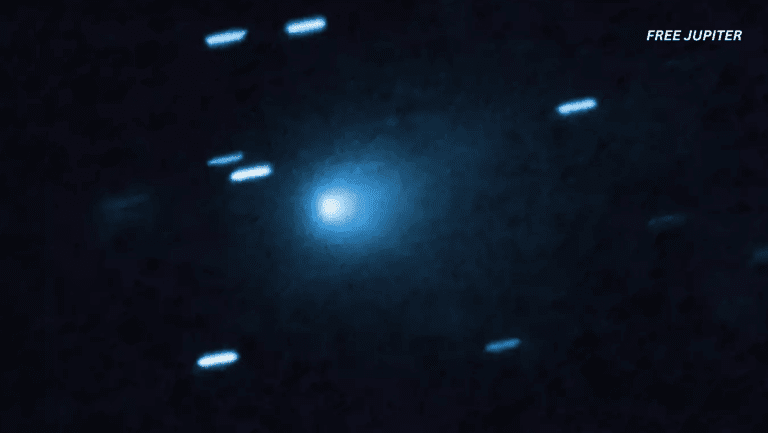Friendly Note: FreeJupiter.com shares general info for curious minds 🌟 Please fact-check all claims—and always check health matters with a professional 💙
Quantum entanglement, a cornerstone of modern physics, has long been considered an instantaneous phenomenon, particles linked in such a way that the state of one immediately determines the state of the other, regardless of distance. However, recent groundbreaking research has revealed that even this seemingly instantaneous process unfolds over a tiny but measurable interval of time. Thanks to advances in attosecond physics, scientists are now able to peer into the quantum realm with unprecedented precision, capturing the fleeting moments when entanglement is born and gaining insights that could revolutionize quantum technologies.
The Attosecond Window: Capturing the Fastest Processes in Nature
An attosecond is an unimaginably brief unit of time-one quintillionth of a second (10^-18 seconds). To put this in perspective, light travels roughly the width of a human hair in a single attosecond. This scale is so fine that traditional measurement tools fall short, but attosecond science provides a “high-speed camera” for the quantum world, enabling researchers to observe electron movements and interactions that were once thought to be instantaneous and thus unmeasurable.
By harnessing ultrafast laser technologies, scientists can now dissect events such as electron ejection from atoms and the formation of entangled pairs with attosecond resolution. This leap in temporal precision is not just a technical achievement; it opens a new frontier for understanding and manipulating quantum phenomena.
Read more: Living Creatures Cast a Faint Aura That Stops at Death, Study Suggests
Revisiting Electron Dynamics and the Onset of Entanglement
Historically, the model of electron behavior in atoms was relatively straightforward: electrons orbit the nucleus and can be abruptly dislodged by bursts of light. Similarly, entanglement was assumed to emerge instantaneously when particles interacted or collided. These simplifications, while useful, masked the complex temporal structure underlying these processes.
Recent research led by Prof. Joachim Burgdörfer and Prof. Iva Březinová at TU Wien, in collaboration with Chinese scientists, has challenged these assumptions by demonstrating that the formation of entanglement itself takes place over a brief but finite time span measured in attoseconds.
Their approach involves firing intense, high-frequency laser pulses at helium atoms, causing one electron to be ejected while the other absorbs energy and transitions to a higher orbital. The two electrons become quantum entangled during this ultrafast process, meaning their properties are intrinsically linked and can only be described as a unified system.
The Quantum Superposition of Departure Times
One of the most fascinating findings is the timing relationship between the departing electron and the electron left behind. Rather than leaving the atom at a single, well-defined moment, the ejected electron exists in a quantum superposition of having left both earlier and later times simultaneously. The energy state of the remaining electron correlates with this timing: if it is found in a higher energy state, the departing electron likely left earlier; if in a lower energy state, the departure occurred later.
On average, this timing difference is about 232 attoseconds-a duration so fleeting it defies everyday intuition but is measurable with current technology. This discovery suggests that entanglement is not a sudden “switch” but a process that unfolds over a definable interval, during which the electron wave gradually spills out of the atom and the entangled state forms.
Read more: New Study Links Oldest Known Impact Crater to Possible Extraterrestrial DNA Origins
Experimental and Theoretical Advances: From Simulations to Bell Tests
The research team employed advanced computer simulations to model these ultrafast quantum events, allowing them to visualize entanglement formation in attosecond increments. Moreover, recent theoretical work has proposed experimental protocols, such as Bell tests adapted for attosecond photoionization, to directly detect entanglement between emitted electrons and their parent ions.
Bell tests, which verify the non-classical correlations predicted by quantum mechanics, have traditionally been used to confirm entanglement over longer timescales. Applying these tests to attosecond photoionization experiments could provide the first direct observation of entanglement dynamics at the birth of electron ejection, offering profound insights into the fundamental nature of quantum interactions.
Why Measuring the Speed of Entanglement Matters
Understanding the precise timing of entanglement formation is more than an academic pursuit; it has significant implications for the future of quantum technologies. Quantum communication, cryptography, and computing all rely on entangled particles to function securely and efficiently. Pinpointing when and how entanglement arises could enable better control over these systems, improving their performance and reliability.
For instance, in quantum encryption, knowing the exact moment entanglement is established could help optimize protocols for secure data transmission, making them more resistant to hacking or interference. Similarly, quantum computers could benefit from refined timing control to reduce errors and enhance computational speeds.
Beyond Preservation: The Importance of Creation
Most quantum research has focused on maintaining entanglement once created, as it is notoriously fragile and easily disrupted. However, this new body of work highlights that the creation phase itself holds critical information. By understanding how entanglement develops on attosecond timescales, scientists can devise new methods to generate entangled pairs more reliably and tailor their properties for specific applications.
This shift in focus from preservation to creation opens experimental possibilities. Researchers are already collaborating internationally to test these theoretical predictions in laboratory settings, using cutting-edge laser systems to probe and manipulate electron dynamics with attosecond precision.
The Broader Impact: Shaping the Quantum Future
These discoveries mark a turning point in quantum physics, suggesting that what once seemed instantaneous actually involves a subtle temporal unfolding. This insight reshapes how scientists think about cause and effect in the quantum realm and underscores the importance of time-sensitive measurements.
As laser and detection technologies continue to improve, the ability to observe and control ultrafast quantum phenomena will expand, enabling new quantum devices and applications. From ultra-secure communication networks to powerful quantum simulators and sensors, the practical benefits of understanding entanglement’s birth are vast.
Read more: A Hidden Mutation in the Human Genome Is Giving Some People an Extraordinary Edge
Conclusion: A New Chapter in Quantum Exploration
The measurement of quantum entanglement’s speed on attosecond timescales represents a remarkable scientific achievement. It reveals that even nature’s fastest processes have a temporal structure that can be studied and harnessed. This breakthrough not only enriches our fundamental understanding of quantum mechanics but also lays the foundation for next-generation quantum technologies that could transform computing, communication, and beyond.
As research progresses, the quantum world becomes less mysterious and more tangible, inviting us to explore the universe’s most fundamental interactions with ever greater clarity and control.










